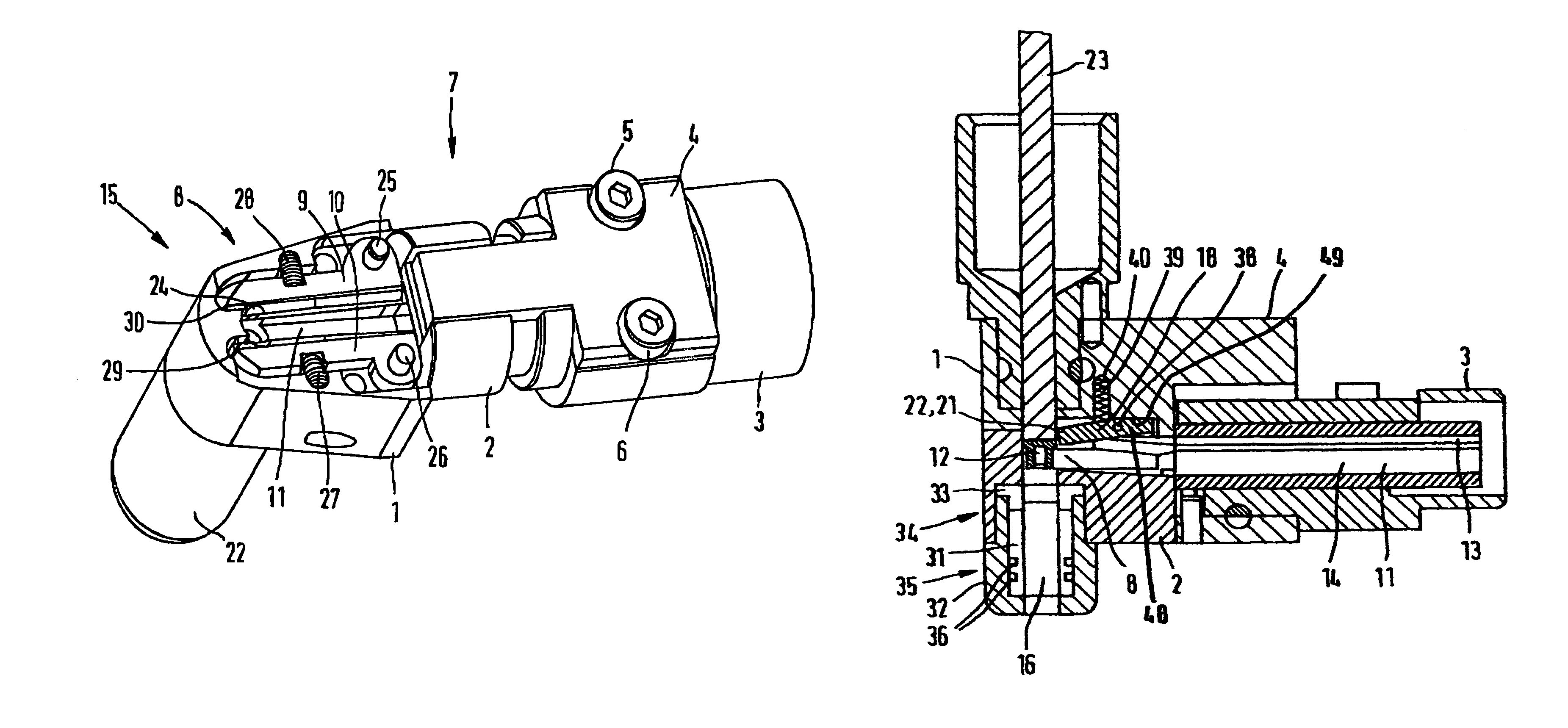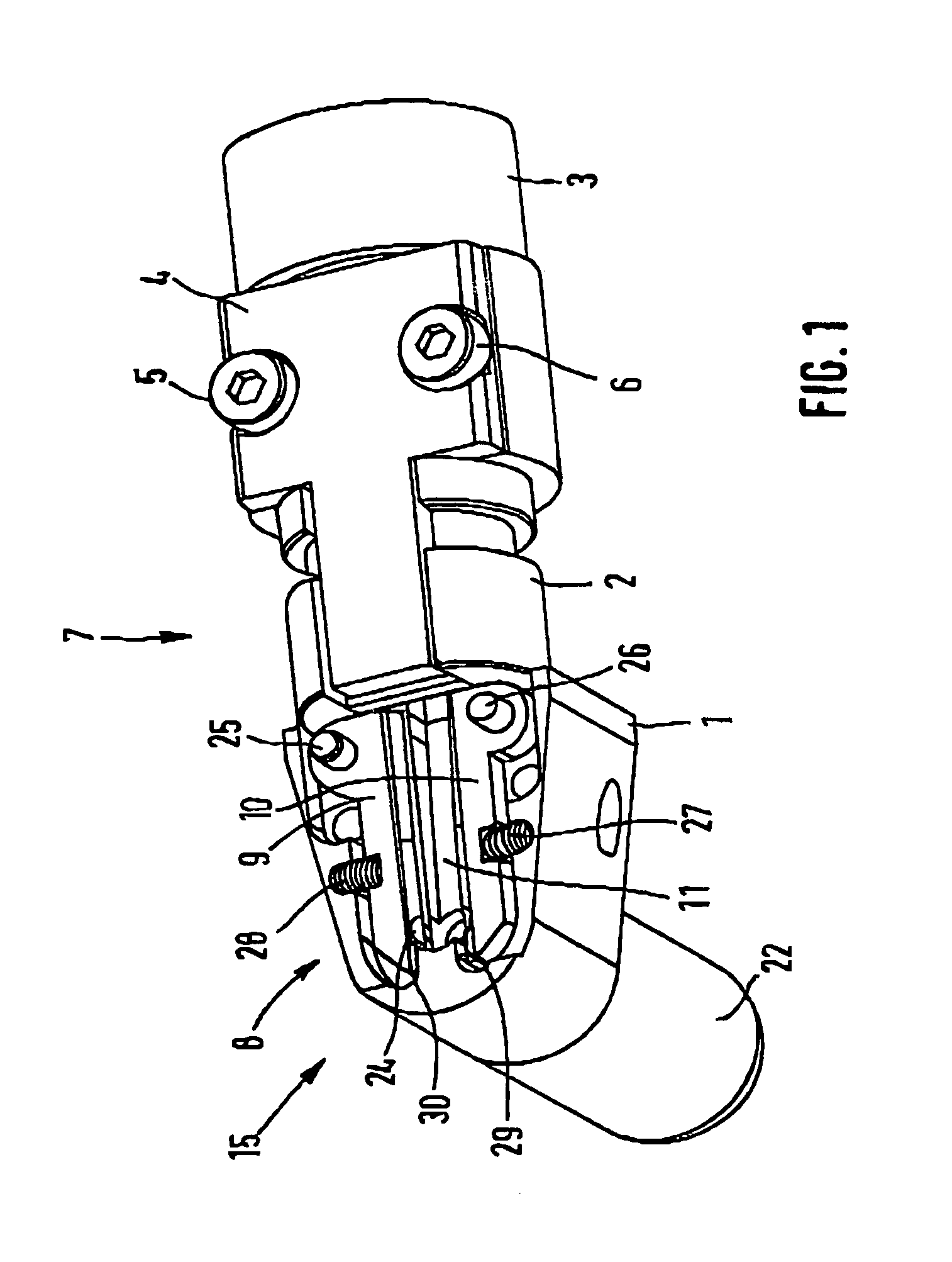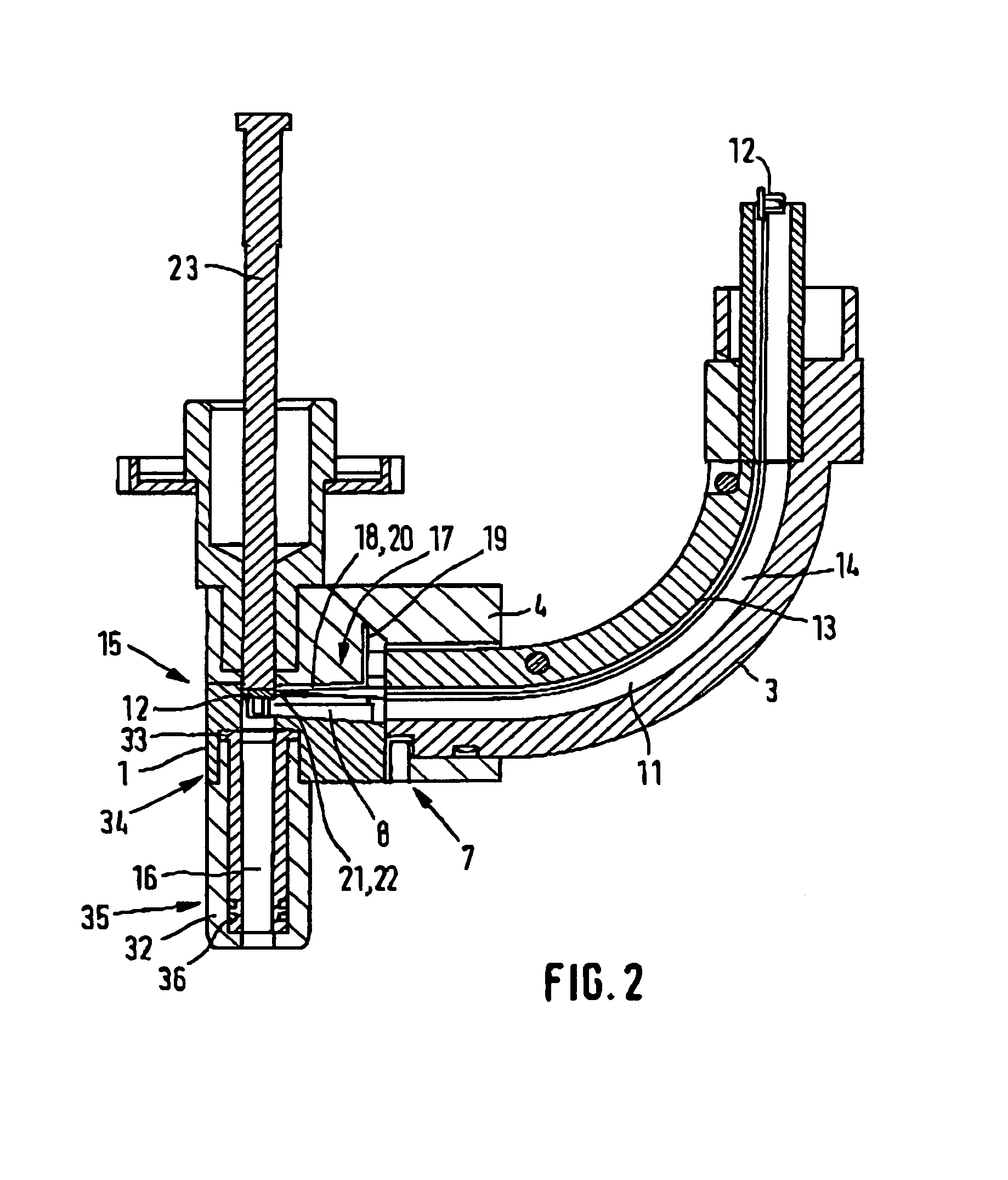Conveyor for elongate components designed with a head and a shank
a technology of elongate components and conveyers, which is applied in the direction of nail dispensers, grinding heads, manufacturing tools, etc., can solve the problems of too small deceleration effect, too large deceleration effect of gripping tongs, and components to be fed to the feeding area, so as to achieve reliable transfer into the transfer region, the effect of small mass
- Summary
- Abstract
- Description
- Claims
- Application Information
AI Technical Summary
Benefits of technology
Problems solved by technology
Method used
Image
Examples
Embodiment Construction
[0033]FIG. 1 shows, in part, a conveyor for elongate components designed with a head and a shank. The conveyor comprises a casing 1. The casing 1 comprises a connecting piece 2 by means of which the casing 1 can be connected to a feed conduit 3. For fixing the feed conduit 3 on the casing 1 there is provided a connecting member 4 which is connected to the casing 1 or the connecting piece 2 by screws 5 and 6.
[0034]The conveyor comprises a feed arrangement 7 having a transfer arrangement 8. The transfer arrangement 8 comprised two positioning segments 9, 10. The positioning segments 9, 10 partially limit a feed duct 11 which is continued in the connecting piece 2 and the feed conduit 3.
[0035]The remainder of a conveyor is described with reference to the embodiment illustrated in FIG. 2.
[0036]The conveyor is proposed for elongate components 12 designed with a head and a shank. The components 12 can be fed to the conveyor via a feed conduit 3. The feed conduit 3 comprises a feed duct 11...
PUM
| Property | Measurement | Unit |
|---|---|---|
| distance | aaaaa | aaaaa |
| resilient | aaaaa | aaaaa |
| force of gravity | aaaaa | aaaaa |
Abstract
Description
Claims
Application Information
 Login to View More
Login to View More - R&D
- Intellectual Property
- Life Sciences
- Materials
- Tech Scout
- Unparalleled Data Quality
- Higher Quality Content
- 60% Fewer Hallucinations
Browse by: Latest US Patents, China's latest patents, Technical Efficacy Thesaurus, Application Domain, Technology Topic, Popular Technical Reports.
© 2025 PatSnap. All rights reserved.Legal|Privacy policy|Modern Slavery Act Transparency Statement|Sitemap|About US| Contact US: help@patsnap.com



